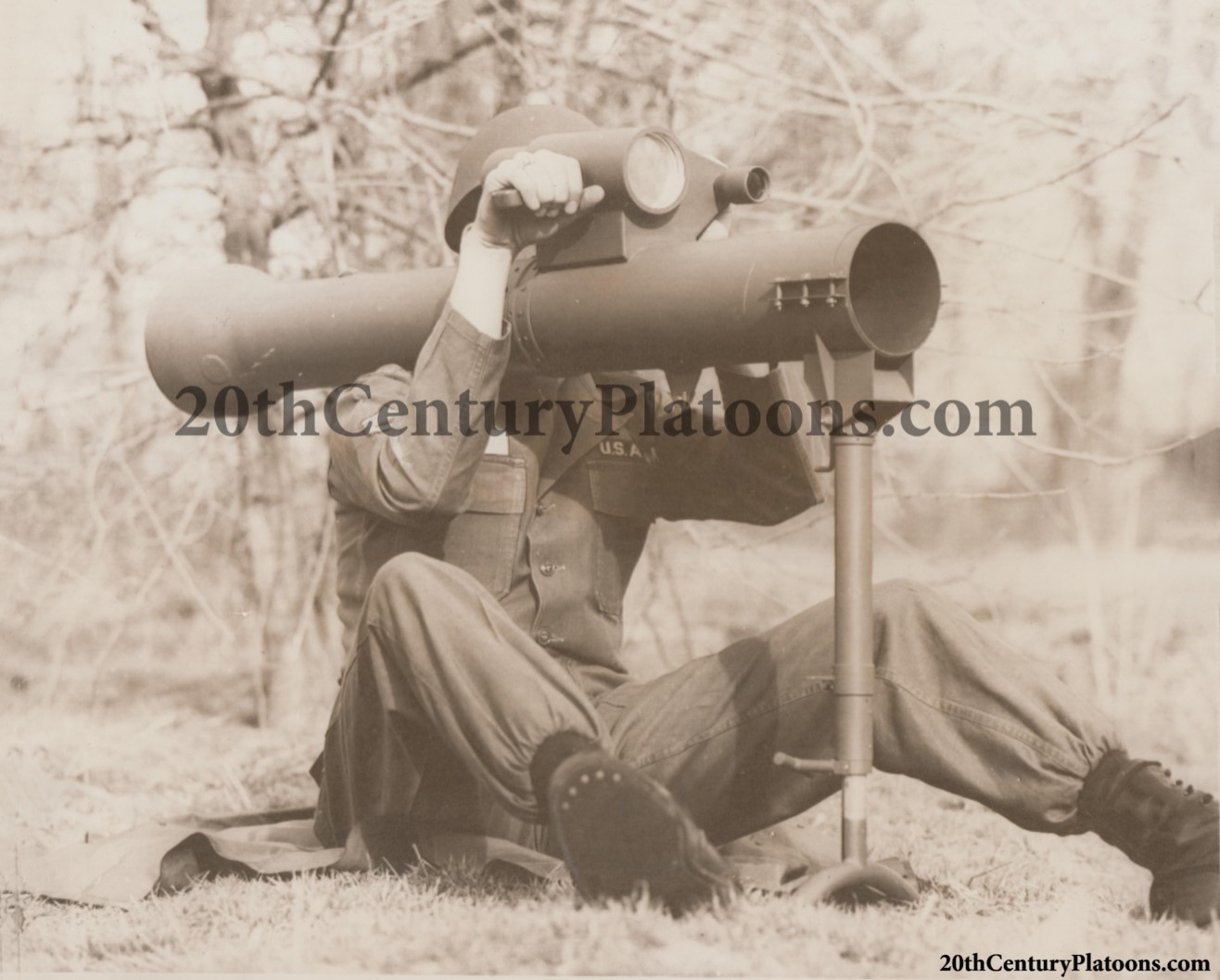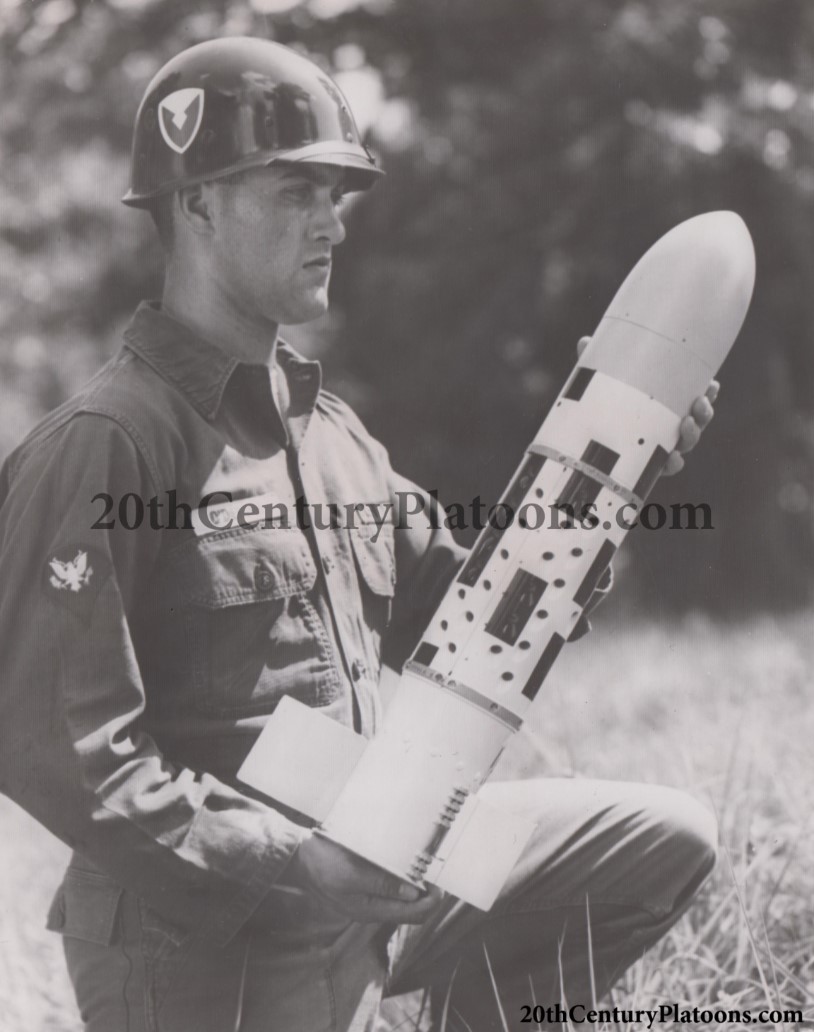Dutch Requirements for a Platoon Anti-Tank Weapon: 1000m, 10kg loaded, 90% hit rate. Year: 1969

Introduction
In the 1960s, the Dutch Army found itself undergoing a fundamental transformation: the process of mechanisation and motorisation was initiated for the 1st and 4th Division: the infanteristen (infantrymen) would become pantserinfanteristen (armoured infantrymen; mechanized infantry), equipped to fight on the mechanized battlefield. Facing the mighty tanks and capable BMPs of the Warsaw Pact, modern anti-tank weapons were more than required.Although the Carl Gustav was selected in 1962 to replace the 57mm M18 recoilless rifle and 3.5in M20 Bazooka used at the infantry platoon level , the Dutch Army would seek to improve the infantry platoon’s antitank capability as early as 1968, just two years after deliveries of the new weapon began.
A number of issues were noted with both the Gustav itself, and the scale of issue:
Below, the solution to the above problem is described, in the form of a set of requirements put forth on the 1st of July, 1969, as well as an information brochure for the XM47 Dragon Weapon System, unsurprisingly found accompanying the requirements document. Indeed, it can be argued the requirements are solely aimed at adopting the Dragon, which happened a decade later in 1978.The Gustav is, due to its weight and required ammunition, limited by the carrying capacity of its two-man team. It is thus less mobile and as a result more vulnerable. Successful use of the weapon must therefore be sought in its rate of fire, the amount of ammunition present with the weapon, and the use of multiple guns in the same sector. As opening fire at the maximum range will betray the firer’s position, positions must be changed often so as to escape the enemy’s return fire. The initial salvo of multiple weapons in the same sector affords the greatest opportunities, after which fire will be less effective as the enemy concentrates its fire on our antitank weapons. Moving to an alternate firing position will take time. Leaving the initial firing position by foot to move to the alternate firing positions will increase the Gustav team’s vulnerability. A minimum of two weapons in the same sector is therefore necessary to ensure continuous fire at a range of 500 m.
It is however interesting to note the current allocation of the Carl Gustav and their ammunition across the different echelons. As noted, the current allocation of two Carl Gustavs to the infantry platoon is regarded as inadequate with regards to ensuring continuous fire.
The two Carl Gustavs assigned to the company headquarters are regarded as being of little use, as they will be assigned to those platoons that find themselves up front. Creating main points of effort [Zwaartepunten, Schwerpunkte] at the company level is regarded as a doubtfully useful practice. The amount of ammunition carried by the Gustav teams is insufficient, and will require riflemen to bring up ammunition to the firing position. The timely presence of ammunition is of key importance. It is not unthinkable only a small percentage of the necessary ammunition can be brought up to the Gustav.
All of this pleads for more Gustavs and more ammunition at the platoon level.
As the poor ratio of available troops to the frontage to be covered will necessitate strongpoints, the maximum range Gustav’s maximum range of 500 m must be regarded as insufficient. The company is forced to enter into combat at close range with a considerably stronger foe, with all the odds favouring the enemy.
The Dragon would however, not quite match the requirements, as illustrated in the table below.
Technical-military-tactical requirements for the Short Range Anti-Tank Weapon (Platoon Anti-Tank Weapon)
1. Introduction
In addition to the battalion antitank weapon [the 106mm recoilless rifle, M40A1] which forms the core of armoured infantry battalion’s antitank capability,
a weapon is necessary to increase the density of antitank fire up to 750 to 1000 metres.
This weapon may not burden the rifle squad to such an extent as to impede its ability to perform its role, and as such will in principle be assigned to the platoon
level. If the weapon is however used to reinforce a rifle squad, its design must allow it to be carried under all circumstances. This implies a portable weapon
with a crew of no more than two men. The weapon must be capable of being fired from all the infantry fighting vehicles [AMX and YP-408 APCs], without the
requirement of being fired entirely “under armour”. This requirement may not require modification the vehicle.
a. The effect must be sufficient to incapacitate all tanks whose armour corresponds to the following under the second edition of STANAG 4089:
- All medium tank targets
- The single and double heavy tank targets.
b. A given hit must incapacitate the tank with a 90% probability. “Incapacitate” is understood to entail at least one of the following effects:
(1) Tank destroyed;
(2) Main gun disabled;
(3) Mobility kill;
(4) Crew killed.
Potential damage must be as such, so as to not allow repair below a level comparable to the NATO division level.
c. The projectile must function at impact angles of 0 to 80 degrees.
d. The fuse and charge must function even when impacting soft ground.
e. It is desired to use a single type of ammunition, in which the anti-tank effect is accompanied by an
anti-personnel effect, without degrading anti-tank performance.

3. Effective range and hit probability
a. The effective range must be at least 750 metres, with 1000 metres preferred.
The minimal effective range must be as short as possible.
b. The hit probability on a stationary target measuring 1.80×0.90m and on moving targets (up to 10m/sec in all directions)
measuring 4.60×2.20m must be at least 90% at a range of 750 metres (desired 1000 metres).
c. Effective range is defined as the range at which a there is an 81% chance the target may be incapacitated.
a. The weight must be as low as possible, with the intent to have a loaded, ready-to-fire weapon carried by a single man.
The desired weight of the loaded weapon is no greater than 10 kg; it is desired the weight including a night optic is no greater than 15kg.
The shape and design of the weapon is to be as such so as to allow easy transport and operation.
b. The weight of the projectile must be as low as possible, weighing no more than 5.5kg in its tactical container. A weight lower than 3.5kg is desired.
c. The length of the weapon must be as short as possible. A length no greater than 1.20m and 1.50m when transported and ready-to-fire are desired respectively.
d. The weapon’s height when in a firing position (on a bipod or tripod) must not exceed 0.60m.
e. The weapons size must allow the weapon to be handled in armoured personnel vehicles, helicopters and airplanes.
a. Darkness
The performance of the weapon system under night and dusk conditions must approach the performance during daylight conditions as close as possible.
This is understood to mean:
(1) The hit probability must match the hit probability under point 2b as close as possible.
(2) It must not be required to dig a firing position during the day so as to allowing firing at night.
(3) If possible, a single sight must be used for both day and night firing.
(4) The weapon’s firing signature may not be meaningfully greater when fired at night compared to during the day.
b. Poor visibility
It is especially desired the weapon’s performance is not diminished by poor visibility (fog, smoke, etc.).
c. Additional equipment
Possible additional equipment must increase the system’s weight as little as possible.
Firing the weapon must generate as little smoke, dust, and muzzle flash as possible, betraying the firing position as little as possible.
7. TracerIn case an unguided projectile is used, it must be provided with a tracer element.
a. The tracer element must be clearly visible out to the weapon’s maximum effective range.
b. The tracer element must not be visible for the target’s position.
In case a reloadable weapon is used, a maximum time of 12 seconds is allowed between targets. This rate of fire must be maintained for at least two minutes.
9. Sector of fireIf a mount [typically meaning tripod] is used, it must be possible to:
a. Traverse 45 degrees to either side
b. Elevate 10 degrees

10. Sights
a. The sights must be both simple and robust yet useful so as to provide a high hit probability as well as finding
potential targets beyond the maximum effective range.
b. In case an optical sight is used, an additional open sight must be present.
In case a telemetrical sight is used, determining the correct range and aiming must be done in a single operation.
a. Ammunition meet the current requirements with regards to transport and storage safety guidelines.
b. The potential danger zone behind the weapon must be as small as possible and not preclude the firing from armoured fighting vehicles.
c. There must be no additional downsides to firing the weapon for its crew, the vehicle’s crew or the vehicle.
d. Before hitting the target, no parts of the projectile which may cause injuries may come loose.
a. The system must be 95% reliable under all weather conditions.
b. The reliability of the projectile (and its potential container) may not deteriorate
for a period of five years when stored in its original packaging. After the initial five year period,
maintenance is permitted so as to allow the projectile to be stored another five years with a reliability of 95%.
c. Preventative maintenance must be limited to simple operations requiring no special
knowledge or tools. If possible preventative maintenance must consist of checking the projectile only.
d. The system must be able to resist “rough handling”.
e. The system must work at temperature limits as described in DRAFT REVISED STANAG 2805 D.
a. Crew
(1) The weapon will normally be operated and maintained by a crew of no more than two men, though it must be possible for a
single man to operate the weapon, with the understanding the rate of fire will be lower than stated under point 8.
(2) It must be possible to check a potential electrical system on the weapon quickly and easily, at any time of day.
(3) If a guided projectile is used, guiding the projectile on target must be achieved simply aiming at and “following” the target.
(4) Operating the weapon system must not require special skills of the crew.
(5) Circumstances concerning weather and climate, cannot complicate operating the system. The wearing of
special clothing (winter or protective clothing) cannot influence operating the system.
(6) Potential smoke, dust, and muzzle flash cannot impede the firing at or finding of targets.
(7) The tracer element may not blind the gunner.
b. Training
(1) Selecting personnel must be simple.
(2) The number of rounds to be fired during training must be as low as possible,
whilst maintaining proficiency must preferably take place without using combat ammunition (e.g. using a sub-calibre training device).
(3) During training and maintaining proficiency, cost-saving aids must be used to train the operation of
the weapon under supervision of an instructor. Their use must be possible during field exercises as well.
(amongst others, simulators, drill ammunition, blank-firing ammunition, practice ammunition).
In case a guided system is used, it must be provided with protective means against natural (e.g. sunlight, rain, static electricity) and intentional (e.g. electronical, magnetic countermeasures) jamming.
Information Booklet, Dragon Weapon System, July 1968, US Army Missile and Munitions School
































Footnotes
